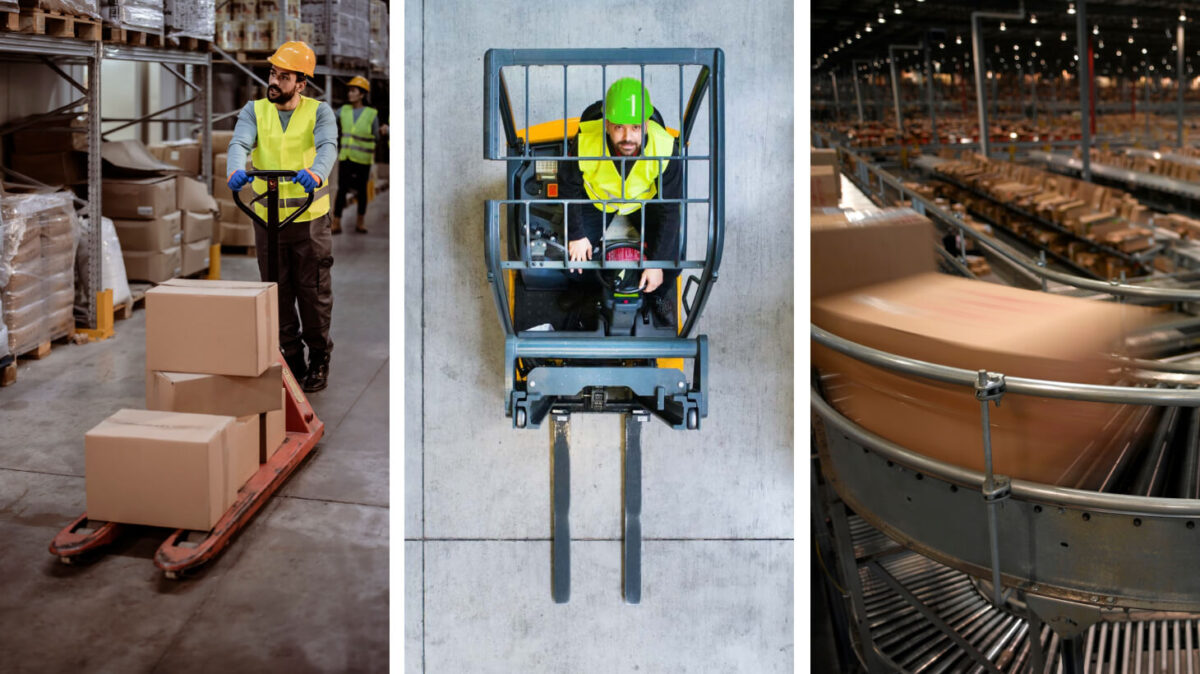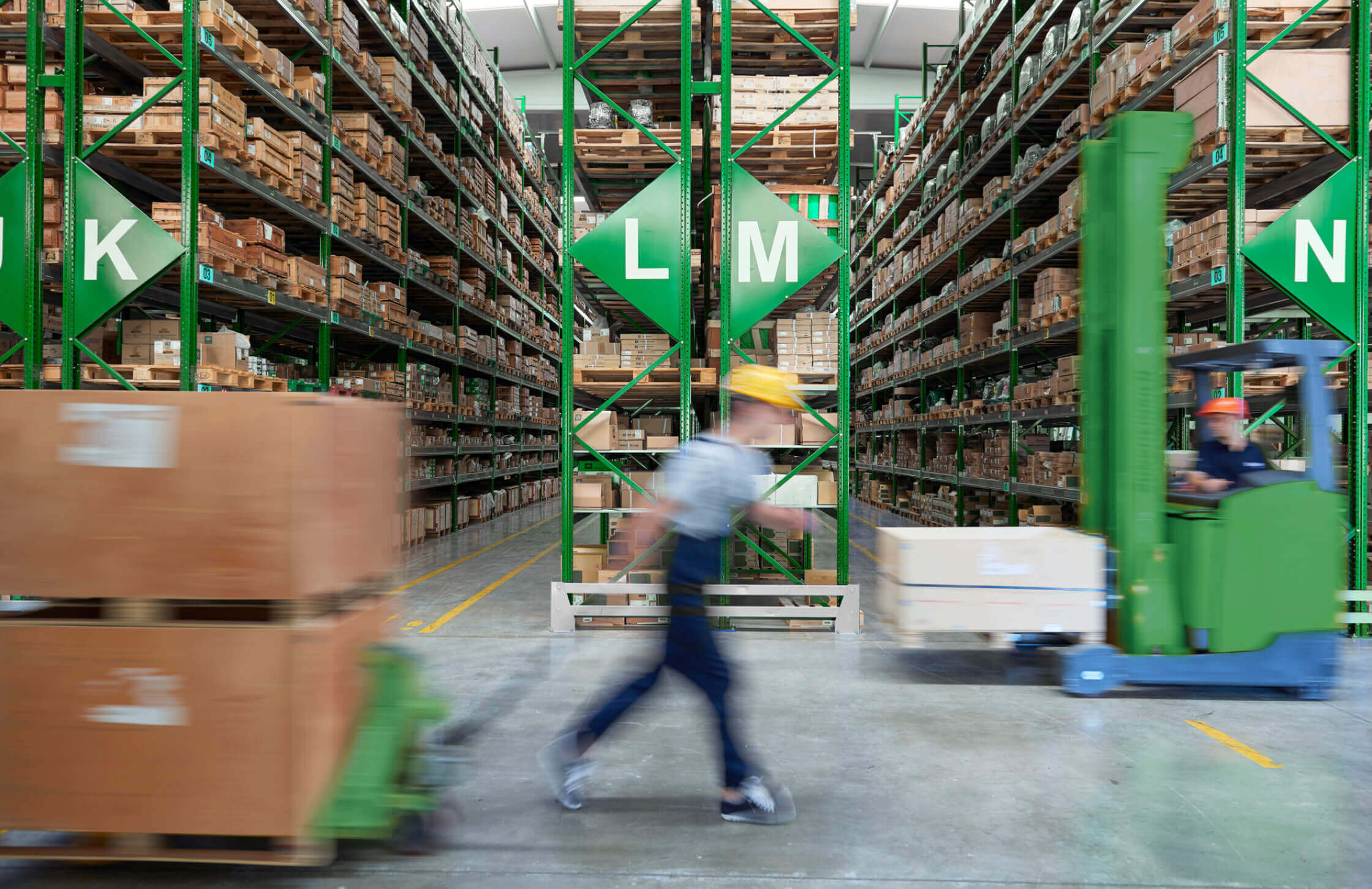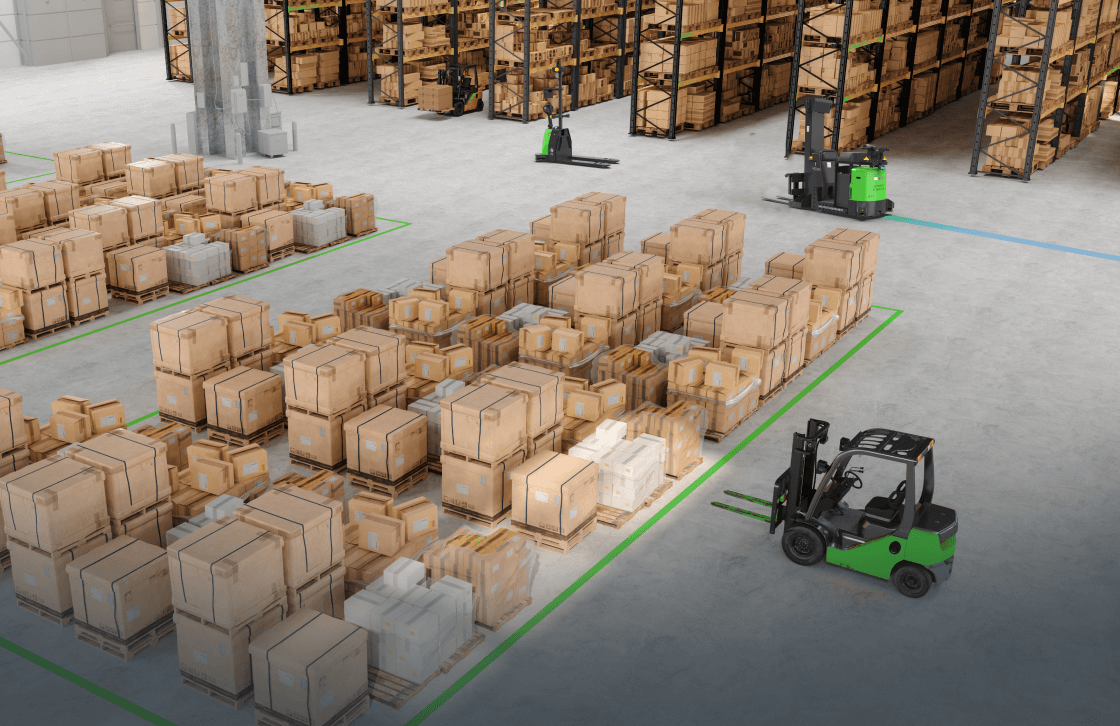Material handling equipment for pallet sized loads is an essential component of efficient warehouse operations and one of the most important things to consider when it comes to creating a streamlined workflow. From pallet jacks to conveyor belts, there are many types of material handling equipment on the market – but where does automation fit in?
Types of material handling equipment
Pallet material handling equipment refers to a wide range of machines and tools used for the movement, storage, and control of palletized materials. This equipment includes manual and powered options, such as pallet jacks, forklifts, conveyors, and cranes.

Manual pallet handling equipment includes pallet jacks, which are small, hand-operated devices used for moving pallets in a warehouse or factory setting. These jacks are often used for short distances or for moving pallets from one location to another within a facility.
Powered pallet handling equipment includes forklifts, which are used for moving heavy loads and stacks of pallets in warehouses and other industrial settings. There are several types of forklifts, including electric, internal combustion, and narrow aisle, each designed for specific tasks and environments.
Conveyors are another important type of material handling equipment used for moving pallets. They can be used to move pallets through a facility, from one location to another, or to transport them between different levels of a building. Conveyors can be powered by electricity, air, or gravity and can be designed to move pallets in a straight line or on a curved path.
Cranes are also used to move pallets in a warehouse or factory setting. They are typically used for heavy loads and are often used in conjunction with other material handling equipment, such as conveyors or forklifts. Cranes can be overhead or gantry types, and can be powered by electricity or internal combustion engines.
Storage equipment for pallets includes racks, shuttle systems, and Automated Storage and Retrieval Systems (AS/RS). Pallet racks are used to store pallets in a vertical position, while pallet shuttles can be used to store pallets in a horizontal position, and AS/RS can accommodate both vertical and horizontal storage. These storage systems can be designed to accommodate a wide range of pallet sizes and weights, and can be configured for specific storage needs.
In addition, there are also automated material handling equipment like Automated Guided Vehicles (AGVs) and Autonomous Mobile Robots (AMRs), which are used to move pallets in a warehouse or factory setting. AGVs and AMRs are self-driving vehicles that can be programmed to move pallets from one location to another, eliminating the need for human operators.
Overall, pallet material handling equipment plays a vital role in the movement, storage, and control of palletized materials in a wide range of industrial and commercial settings. It allows the efficient movement of goods, reducing the need for manual labor and increasing productivity. With the help of this equipment, companies can handle large volumes of materials and improve their overall operations.
Automating your material handling equipment
A recent study by Gartner showed that 95% of supply chain executives are planning to implement warehouse and factory automation by 2025. Automation not only helps to reduce reliance on labor, but it also enables your existing workforce to become more productive. The increased visibility that automation provides makes continuous improvements easier to accomplish. Other benefits of automating material handling equipment include increased scalability and flexibility.
95% of supply chain executives are planning to implement warehouse and factory automation by 2025.
Gartner
How to start
An intelligent way to approach automation is to start with a thorough assessment of your operation. Broadly, this involves analyzing your pain points, identifying potential solutions and pilot sites, and verifying the return on investment of automating your material handling equipment.
Automation solutions can be grouped by payload size and type, so start by examining whether you are moving orders and materials by pallets, bins, or carts. By determining the average size and weight of your payloads, you begin to narrow down the choices of material handling equipment needed. Look for the processes that are most labor intensive.
Another key aspect to getting started with automation is to focus on functions for which case studies and success stories exist. Examples include dock-to-stock, picking and packaging to outbound, and replenishment and delivery to pick/pack lines, kitting, and value-added services. Many other well-documented use cases exist, and for manufacturing, for example, encompass Kanban replenishment, lineside and kitting milking runs, WIP and Assembly Line Delivery, to name a few.
Don’t try to solve your hardest problems right away. Instead, focus on the most scalable opportunities – those that can be easily replicated once shown successful. Avoid customization because it is more expensive and usually has a longer payback period. Be aware of space constraints because robots don’t behave the same as people – robots may need more room, or the shape of work cells may need to be changed. Do a survey of case studies of industries similar to yours to get an overview of the use cases with the highest potential return.
If you’re ready to get started with an initial assessment, contact us to set up an appointment with a Vecna Robotics automation expert.





